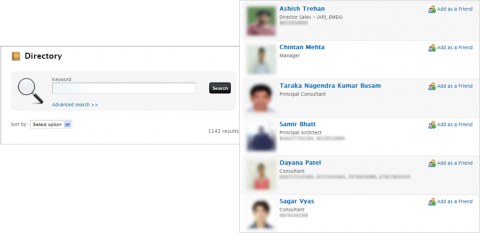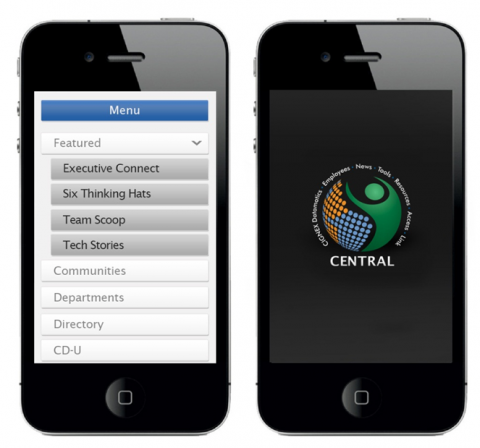Organizations are investing time and resources to make the intranet their central destination for all their employee needs. Intranet not only serves as a destination for knowledge management, but also helps to connect employees across all departments. This platform has emerged as a powerful communication tool for internal communications and adding newer dimension and functionalities to cater to all employee needs.
So, what is the secret of keeping Intranet dynamic and interesting while making it easy to use? Here are some Top 10 Must-Have Intranet Features for your enterprise which is sure to grab eyeballs and keep your employees connected.
#1 Making Information Discovery Easy:
Intranet is loaded with information. How quickly one can locate the relevant information is what counts the success! With an easy navigation in form of Mega-menu information can be located category-wise. Well defined page structure and breadcrumb are a great way to acquaint users with their current location in the intranet. Make the content easy to search with content indexing and advanced search options.

#2 Interactive Hubs for Knowledge Sharing:
Storing and sharing information within is very imperative for any employee. Spaces like Document repository to store/upload documents, blogs/forums/articles to share queries and new learning are some of the great ways to preserve and share knowledge across teams and departments. With added functionalities like tags, tag cloud, comments and likes, users get the advantage of quickly locating relevant content and can start interacting with the thought conceiver.
#3 Employee Directory:
Information on co-workers is most sorted. Details like desk number, email id, department, location etc. are handy bits of information. Reaching out to front desk or HR each time is very time consuming. Employees can quickly browse and search through the directory to read more information.

#4 Seamless Content Management:
Quality of content is what drives people to Intranet. Freshness and relevance of content is imperative to maintain a high quality. To allow content update independently at each department level, roles can be created for content administrators. This set of users will access the document and perform content updates and modification. This will not only reduce dependency on one team/department, but also encourage fresh and latest content.
#5 Mobility:
In the age of mobile devices, access through portable devices is must. Employees will prefer to have access anywhere using any device versus going to office and logging to their systems to access the resources and information. Hence, a mobile compatible version is a must.

#6 Professional V/s Personal Profile:
Professional profile can be expanded to include certifications, qualifications and similar information which can help resource managers during allocation of projects. Adding a personal profile like interests, hobbies, and blog links can make it an interesting blend. Adding profile pictures can especially be helpful to search a new face when you plan to meet the person first time.
#7 Corners for Recreation:
Intranet opens up wide scope for communication thereby promoting camaraderie amongst teams. Spaces like forums and blogs where discussion threads on other topics can be started is a nice way to connect employees. Corners for sharing classified ads, stress buster games, quizzes, puzzles etc. are good ways to give a break to employees at work!

#8 Themes That Define Your Mood:
Changing themes in line with festivals, holidays or upcoming events makes the intranet portal interesting. Optionally, themes can be user defined also. Users can also select theme from a set of pre-defined themes. On selection, sections of intranet will be customized as per the selected theme.

#9 Marketplace:
Reusability saves time. Hence, organization should promote its employees to share and store reusable elements like documents, templates, applications. This not only saves time, but also allows users to channelize their energy for other productive activities.

#10 Application Flexibility with Integration:
An intranet acts as the central knowledge hub, and organization must ensure platform’s flexibility to integrate with other legacy applications within organization. Applications can be connected using SSO and/or LDAP. This reduces the efforts of multiple login and working on different windows. Users can log in from one portal only and browse across other productivity tools and applications.

